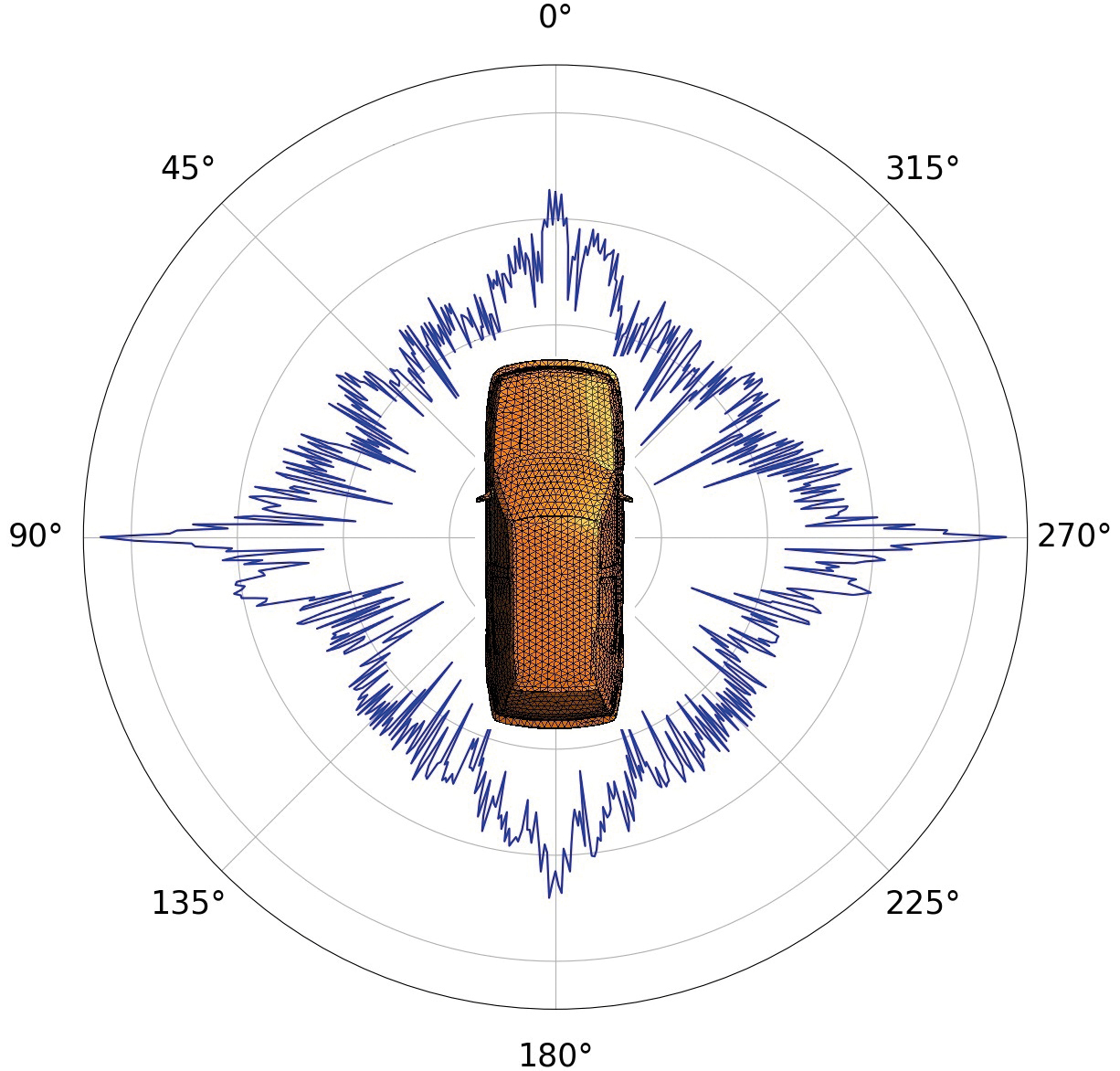Time-dynamic radar simulation of traffic scenarios in real time
Up to now, developing new driver assistance systems has required numerous test drives. After all, the decision algorithms have to be trained accordingly. Fraunhofer FHR has now developed a simulation tool that generates raw radar data and electromagnetically simulates time-dynamic processes – based on physical optics and, depending on the complexity, in real time. It is therefore ideally suited to replacing time-consuming test drives.
Driver assistance systems make it easier for drivers to maintain an overview and thus ensure greater safety. This requires environmental sensors that reliably "keep an eye" on the car's surroundings, as well as algorithms that evaluate this data and make the necessary decisions with regard to safety. Up to now, these algorithms have mainly been tested and trained on real test drives – a time-consuming and expensive undertaking.
Fast simulations instead of lengthy test drives
Fraunhofer FHR's GOPOSim tool can be used to generate raw data for testing the algorithms – thus replacing test drives. An additional special feature: It can also be used for time-dynamic processes, such as those that occur everywhere in traffic scenarios, for example when a cyclist from a side street crosses the lane without looking. The simulation tool is already being used in various projects with customers from industry. The results can also be processed as an object list and used in the ATRIUM radar target simulator, which can be used to test radar sensors over the air.
The software can be used to create raw data suitable for evaluating micro-Doppler effects on moving objects in the scene. These occur when multiple larger and smaller movements are superimposed onto an object – for example, the movement of the arms and legs of a running pedestrian, where the limbs move independently of the pedestrian themselves. Through appropriate algorithms, such micro-Doppler signatures can be used to carry out classifications that can enable the identification of a pedestrian, cyclist, or a vehicle. The simulation is based on a deterministic ray tracing method as well as physical optics in calculating the scattering on the objects. Unlike the shooting and bouncing rays algorithm, in which a fixed number of rays are sent into space, GOPOSim only emits rays that are known to hit objects into space – this is referred to as an analytical approach. The decisive advantage: The simulation time can be significantly reduced. Plus, depending on the complexity, simulations are already possible in real time. This is a prerequisite for software in the loop or hardware in the loop simulations.
